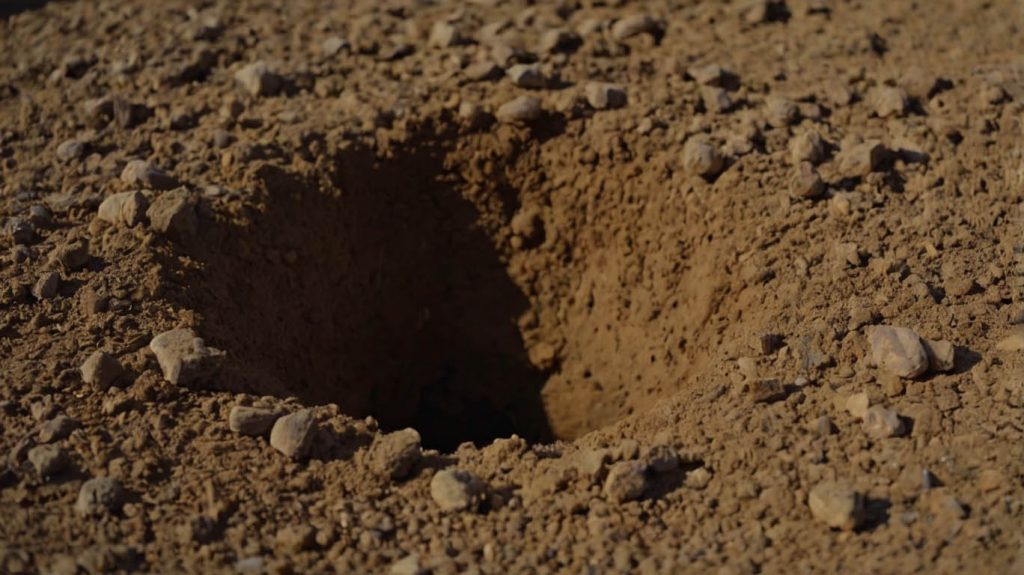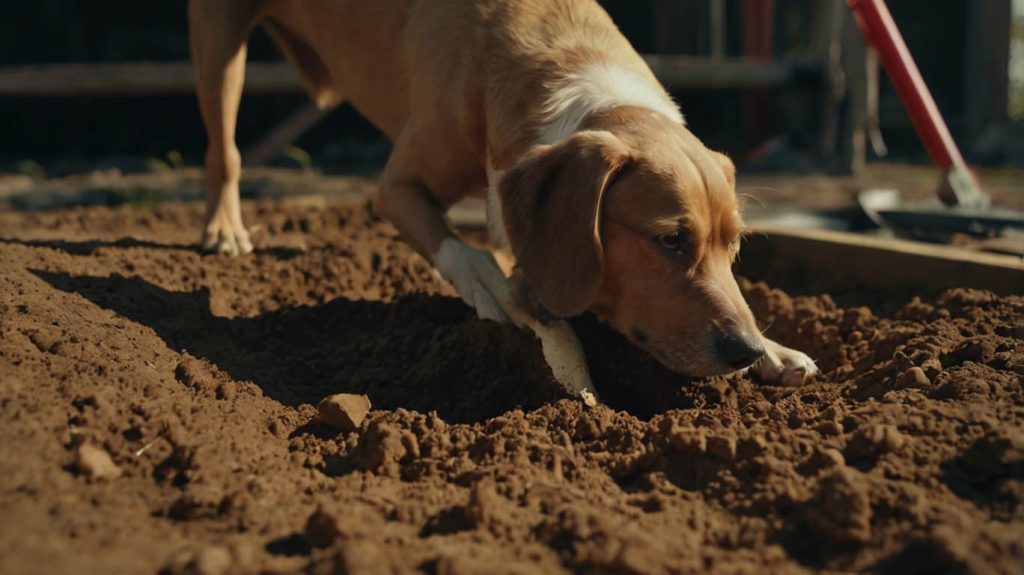You step outside to enjoy your morning coffee, only to spot a crater-sized hole where your rose bush used to be. Dirt is everywhere, your dog is wagging their tail with pride, and you’re stuck wondering how to fill a hole your dog dug —again.
Whether your pup is a part-time excavator or a full-time landscaper, dog-dug holes can wreak havoc on your lawn, garden, and even your peace of mind. The good news? You can repair the damage and discourage the digging from continuing—without punishing your pet.
In this complete guide, you’ll learn how to fill a hole your dog dug, how to restore your yard properly, and how to keep those paws from creating more trouble.
Why Dogs Dig Holes in the First Place
Before you grab a shovel, let’s look at why dogs dig. Knowing the “why” behind the behavior can help you prevent future holes.
Common reasons include:
- Boredom or excess energy
- Instinct to bury food or toys
- Escape attempts (under fences)
- Comfort-seeking (cool earth in summer)
- Hunting small critters
- Anxiety or separation stress
Understanding the cause is essential to developing a permanent solution. So, learning how to fill a hole your dog dug should always go hand-in-hand with stopping the digging cycle.

Case Study: Toby the Tunnel King
Toby, a 3-year-old Beagle, was obsessed with digging near the back fence. His owner filled the holes repeatedly, but Toby kept returning. After consulting a trainer, they discovered Toby was trying to chase squirrels. They installed a mesh barrier along the fence line, redirected his focus with puzzle toys, and provided more mental stimulation. Toby hasn’t dug since, and the repaired holes stayed intact.
Toby’s story shows that how to fill a hole your dog dug is only half the job—the other half is prevention.
How to Fill a Hole Your Dog Dug: Step-by-Step Repair
Now, let’s get into the physical fix. Repairing the hole correctly ensures your yard looks great again and avoids sinkage or repeated digging.
Step 1: Clean and Prep the Area
- Remove any loose dirt, debris, or chewed-up roots.
- Use a rake to level the surrounding area.
- If the soil is too dry, moisten it slightly for easier handling.
Step 2: Fill the Hole with Fresh Soil
- Use a mix of topsoil and compost for best results.
- Pack the soil tightly to avoid future sinking.
- Slightly mound the top to account for settling over time.
Step 3: Reseed or Re-Sod (Optional)
- For grassy areas, sprinkle grass seed over the soil.
- Press seeds lightly into the dirt and water regularly.
- Alternatively, patch with sod squares for instant results.
Now that you’ve mastered how to fill a hole your dog dug, let’s focus on keeping that spot safe.
How to Prevent Dogs from Digging in Repaired Areas
Dogs are creatures of habit, and chances are, they’ll return to the scene of the crime. Use these techniques to deter re-digging:
- Place large rocks or chicken wire under the topsoil
- Use pet-safe deterrent sprays (citrus or vinegar-based)
- Supervise outdoor time until the area heals
- Provide designated digging spots (dig pits) if needed
- Use motion-activated sprinklers for repeat offenders
These tactics make your efforts in how to fill a hole your dog dug last longer—and keep your lawn looking pristine.
Choosing the Right Soil for Long-Term Repair
Not all soil is created equal. To avoid future problems like compacted patches or uneven settling, use:
- Topsoil mixed with compost or peat moss
- Loamy soil for areas that need drainage
- Sandy mix if your dog’s holes are near wet areas or plants
Quality soil supports healthy turf regrowth and makes it less appealing for digging again.
Creating a “No Dig Zone” in Your Yard
Sometimes, prevention requires a bit of creative landscaping. Consider these ideas:
- Raised flower beds with stone borders
- Mulched areas with buried deterrent fabric
- Decorative fencing around sensitive spots
- Gravel pathways or ground cover in high-dig zones
Landscaping with intention not only improves aesthetics—it supports your strategy for how to fill a hole your dog dug and prevent future ones.

Redirecting Digging Behavior with Positive Outlets
Dogs don’t dig to annoy you—they dig to fulfill natural instincts. Give them a better alternative:
- Designate a digging corner or sandbox
- Bury toys or treats in the sandbox to encourage use
- Praise and reward digging in the right spot
- Discourage digging elsewhere with redirection and commands
A redirection strategy balances freedom and control, helping your dog meet their needs while keeping your lawn intact.
Training Commands That Help Stop Digging
Reinforce boundaries with these key cues:
“Leave It” Command
Stops digging on sight. Practice in distraction-free settings before using outdoors.
“Place” or “Go Lay Down”
Redirects your dog to a calm space. Use when digging is triggered by excitement or anxiety.
Training builds mutual trust and enhances all the other methods discussed in how to fill a hole your dog dug effectively.
Using Barriers and Natural Deterrents
If your dog targets garden beds or fence lines, consider these options:
- Bury chicken wire just under the soil—dogs dislike the texture
- Line fences with lava rock or mulch—both are dig-deterrent materials
- Add strong-smelling deterrents like coffee grounds or citrus peels
A simple physical barrier can be a game-changer when learning how to fill a hole your dog dug and stop the repeat offense.
When to Seek Help for Excessive Digging
If your dog continues to dig despite all efforts, it may signal deeper issues:
- Separation anxiety
- Obsessive behavior (compulsive digging)
- Boredom from under-stimulation
- Hunting instincts in high-prey drive breeds
In these cases, consult a professional dog trainer, veterinarian, or behaviorist for a more customized plan.
FAQs
Can I just refill the hole with the same soil?
Yes, but adding compost or new soil improves turf regrowth and prevents settling.
Will my dog dig in the same spot again?
Possibly. Dogs often return to previously successful digging sites. Use deterrents and supervision.
What if my dog digs for cooling off?
Provide shaded areas or a cooling mat to prevent temperature-driven digging.
Is it bad to let dogs dig occasionally?
Not at all! Designating a dig zone can satisfy their instinct without ruining the lawn.
Can digging signal a medical problem?
Rarely. However, if accompanied by anxious behavior or pacing, check with your vet.
Conclusion: Repair the Hole, Redirect the Habit
Now that you know how to fill a hole your dog dug, it’s time to go beyond the patch. Repairing the yard is only half the battle. To stop the cycle, you must identify why your dog is digging, provide suitable alternatives, and reinforce better behavior consistently.
The result? A cleaner yard, a happier pup, and fewer surprises under your rose bushes.


